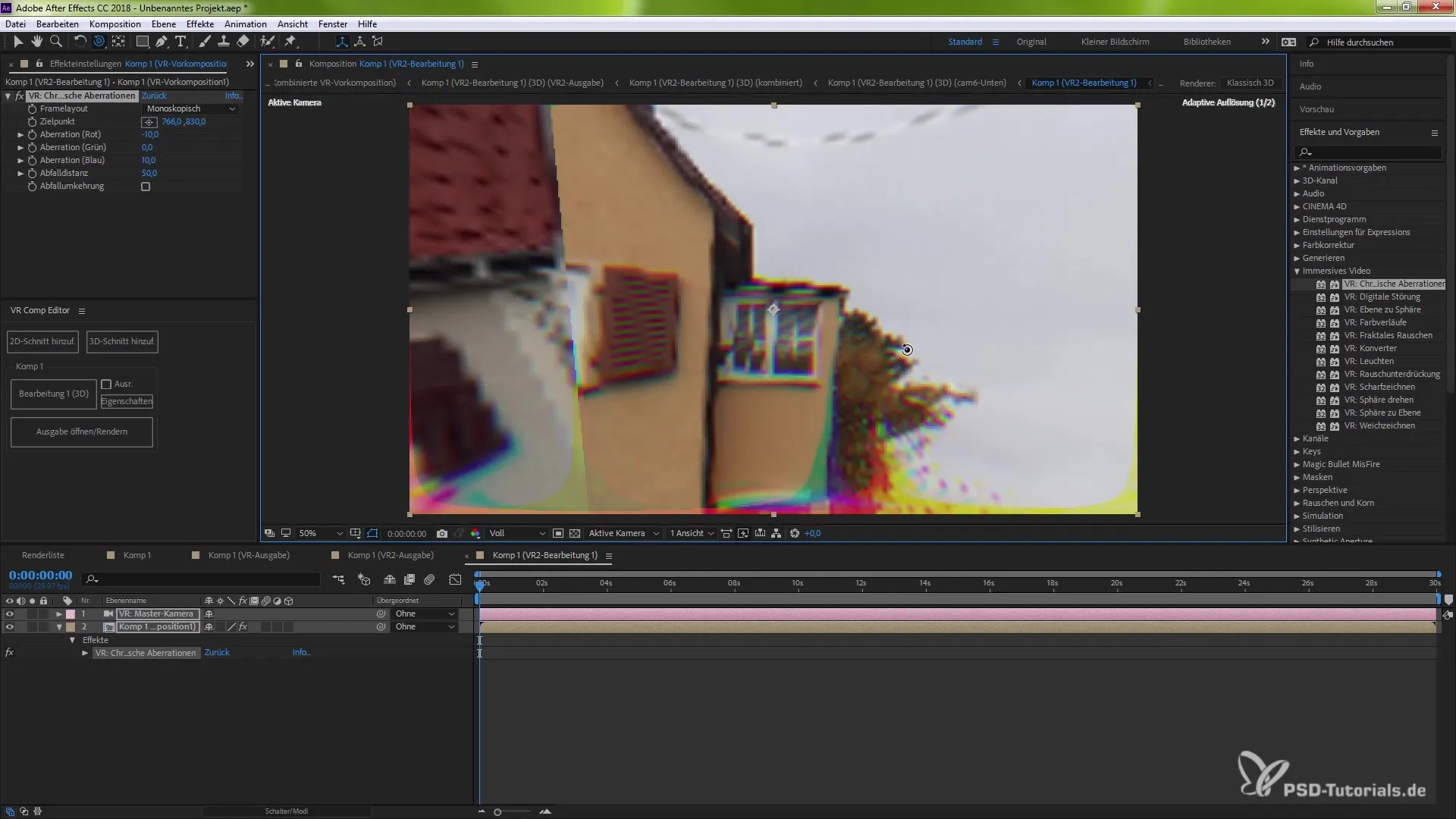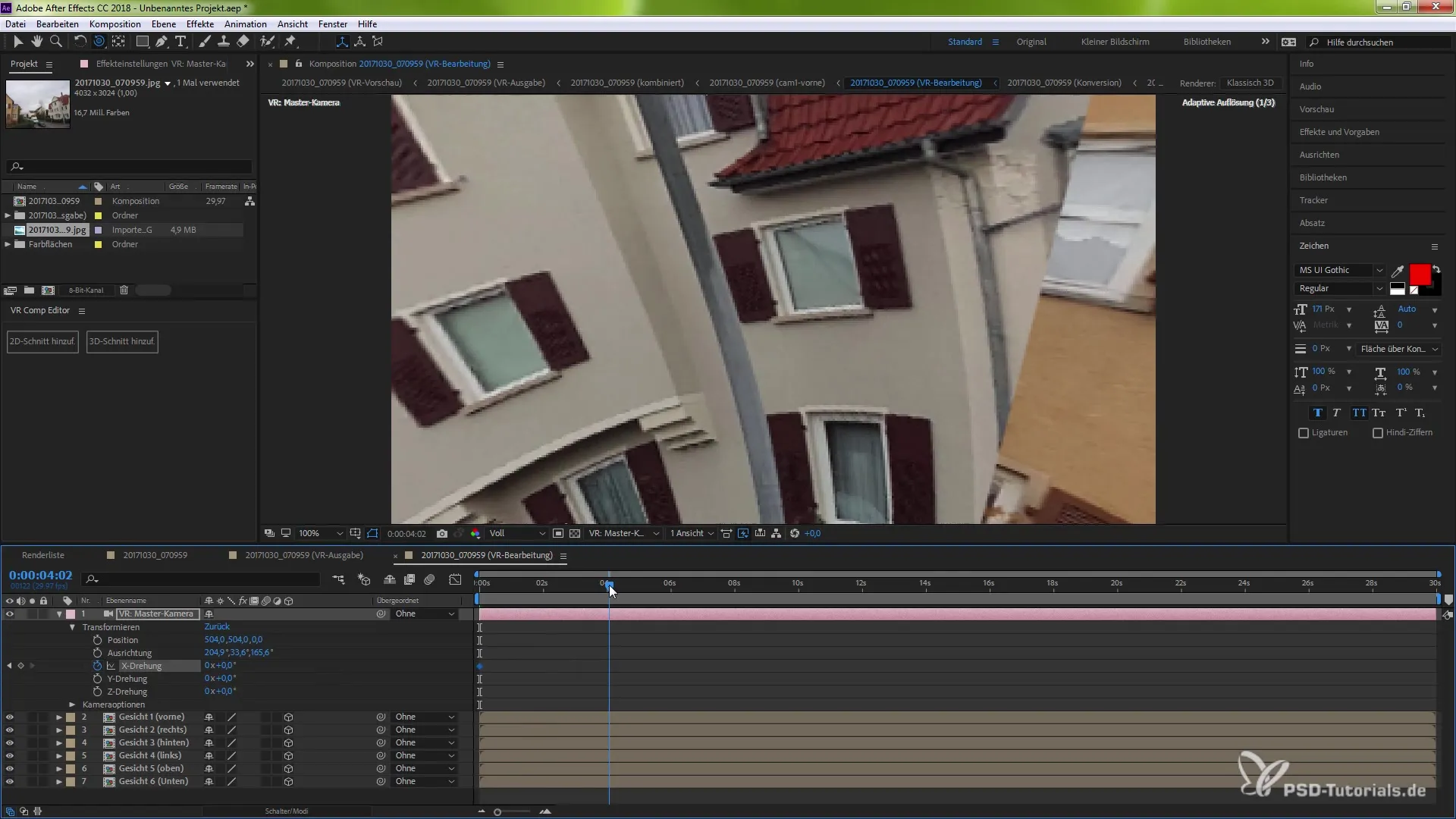The VR-features in After Effects CC 2018 offer numerous possibilities to elevate your creative projects to a new level. In this guide, I will detail the new effects, titles, and transitions that will help you create engaging and dynamic content. You will learn how to experiment with different effects and enhance your video projects.
Key Insights
- New effects and customization options specifically for VR content.
- Use of 3D text and cubemap extraction.
- Animations and optimization of video quality.
Step-by-Step Guide
Customizing VR Effects
To edit the aberration for a desired effect, you can adjust the intensity and specific color. You have various options, including the green and blue effect. This way, you can achieve the perfect look for your projects.

Once you have chosen an effect, you can change the decay at any time. Whether you want to intensify or soften the effect, these adjustments are central to creating your videos.
Trying Digital Distortion
Another effect you can try is digital distortion. This effect creates an interesting visual distortion. You can configure the mask to apply the effect to the desired areas of your video.
You also have the option to play with the amplitude to influence the strength of the effect. This way, you have control over how intense the distortion appears in your project.
Gradients and Fractal Noise
With the new gradient settings, you can achieve beautiful visual effects by using different methods like "Add." The fractal noise is another interesting effect that helps you create dynamic textures.
If you pay attention to quality, you can adjust the opacity or choose different blending modes to achieve the desired result.
Cubemap Extraction
To generate a cubemap, go to "VR Composition" and select "Extract Cubemap." Make sure you have a suitable input composition prepared. With a smooth transition, you can optimize the quality of your cubemaps.
You will then get a closed cube that you can customize as desired. Familiarize yourself with the settings for storage and image quality to achieve the best results.
Creating 3D Titles
If you want to create a title, use your text tool. Set the font size and color before playing with the material options. Make sure to activate the shadow options. This gives your text more depth and a more engaging visual experience.
To bring the text into the 3D environment, navigate along the Z-axis and use the rotation tool to position your text. This is important for immersive results in VR.
Animations and Rendering
If you want to program an animation, go to the "Transform" section and add a rotation. You can adjust the entire scene for a duration of 4 seconds and save your animation.

When everything is ready, send the file to Adobe Media Encoder. Click Render to export your recently compiled animation. The result shows the rotation you have integrated into your project and brings VR immersion to your video.
Summary – Guide to New VR Features in After Effects CC 2018
With the new VR features in After Effects CC 2018, you are well-equipped to realize creative and immersive projects. With the diverse effects, cubemap extraction, and options for 3D texts, you have the opportunity to significantly enhance the quality and appeal of your videos. Experiment with the various options to find out what fits best with your projects!
Frequently Asked Questions
How can I adjust the aberration in After Effects?You can adjust the aberration through the effect controls by changing the intensity and color of the effect.
What is cubemap extraction?Cubemap extraction transforms a 2D composition into a 3D cubemap format that you can use in your VR projects.
How do I create a 3D title?Use the text tool to create text, change the material options, and position it in the 3D environment of your composition.
How do I render my animation?Send your composition to Adobe Media Encoder and select the appropriate render settings before clicking Render.
How can I work with digital distortions?Add the digital distortion effect and adjust the mask and amplitude to achieve the desired look.


